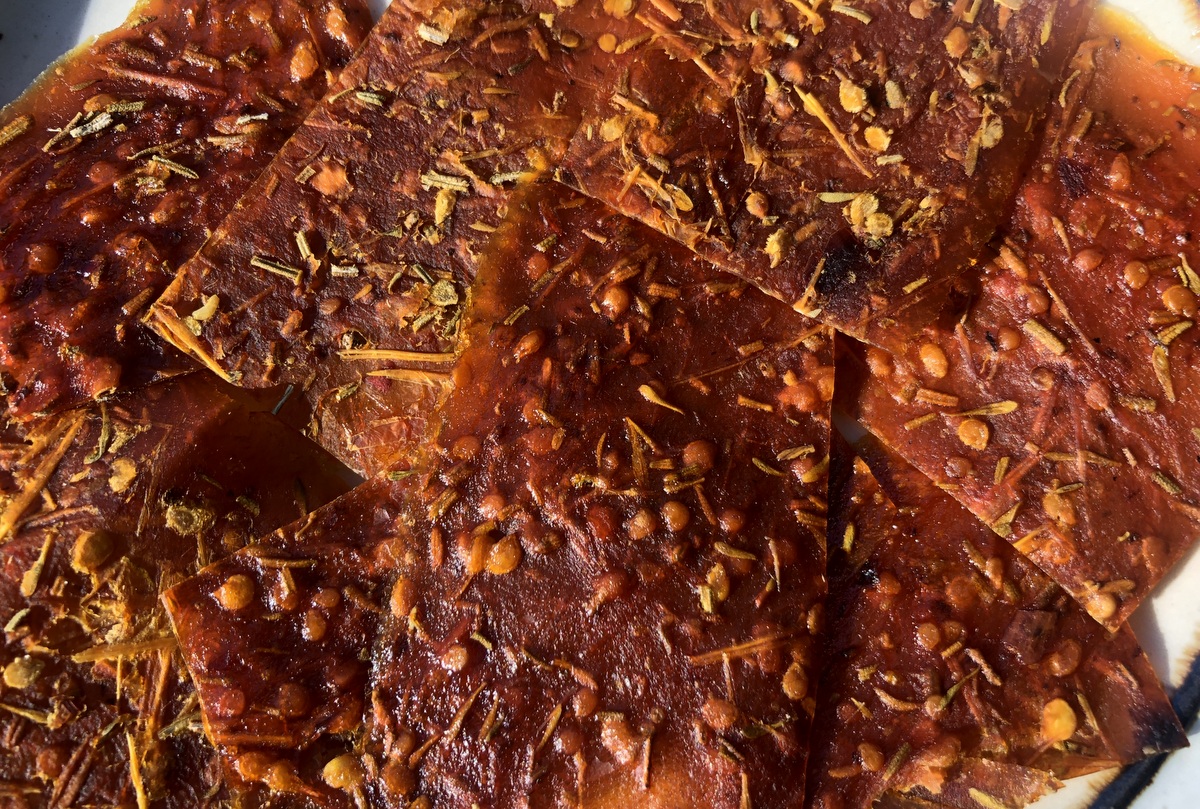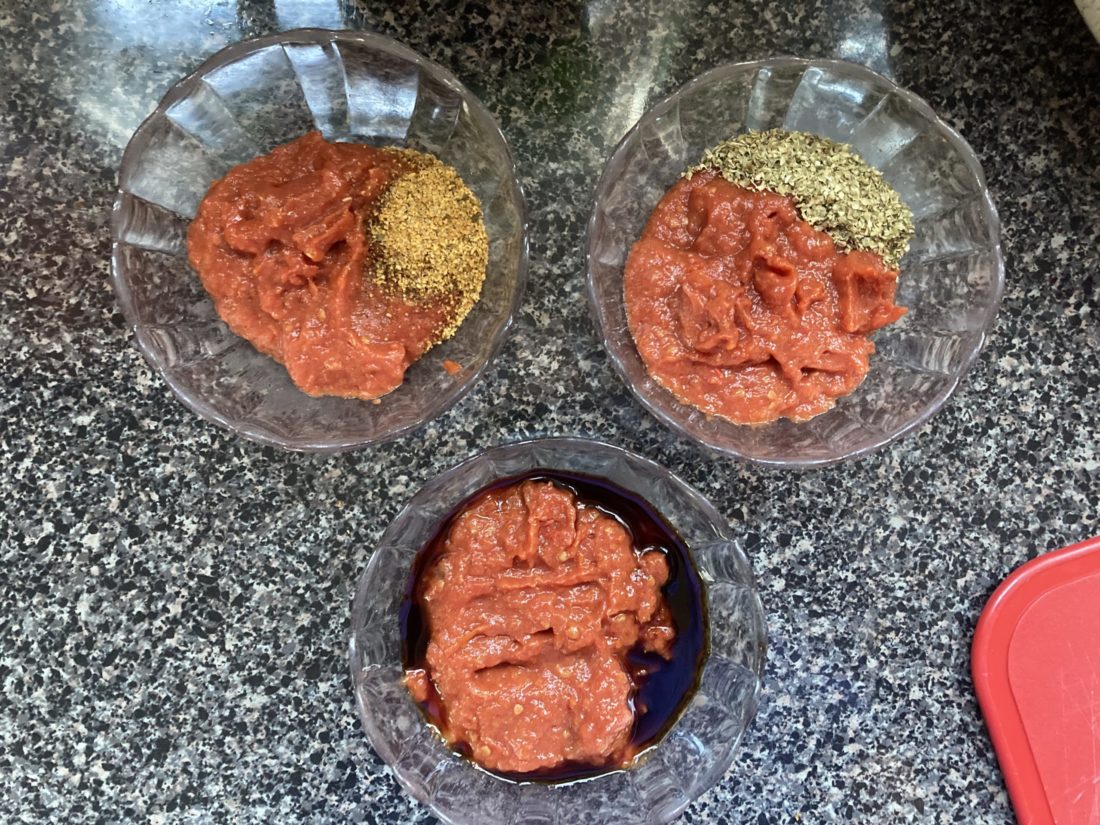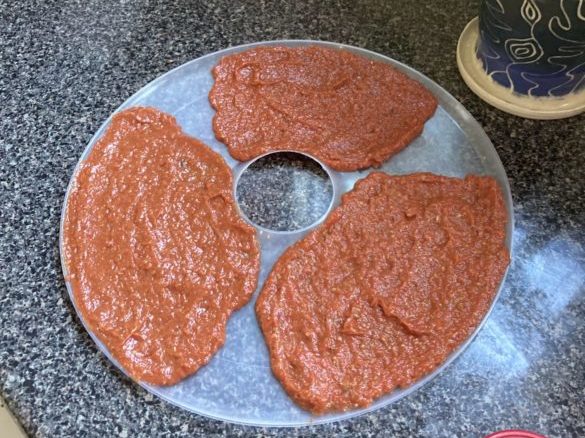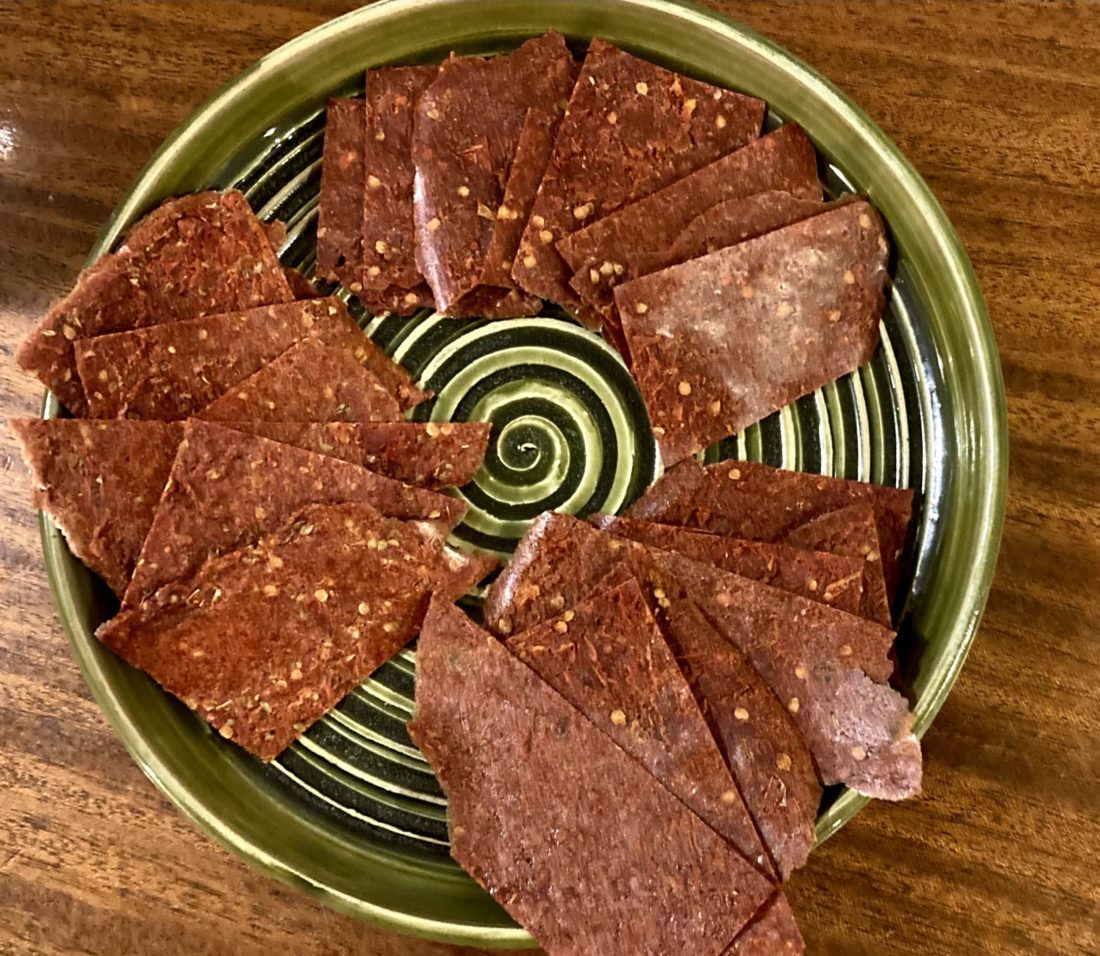
01 Oct Tomato Leather
Some of us get sentimental or even sad when the summer season winds down and our favorite fruits are gone until the following year. I look for as many ways as I can to preserve the bright flavors to enhance snacks and meals through the quieter seasons ahead. Many farmers at the season’s end have an excess of produce and encourage us to preserve for the future. Some projects, like freezing, require only a sheet tray and space; others demand more time and labor. This variation on a childhood favorite is an epicurean delight and a surprise to all who taste it.
Tomato Leather
Ingredients:
Tomatoes- 3 pounds (or more)
Fresh herbs, chopped- 1 Tbs. (or 1 tsp. dried) per pound of tomatoes *see below for more seasoning suggestions
I begin by coring and quartering at least a few pounds of tomatoes. I add them to a large pot and heat them over medium heat until the liquids begin to boil. To save time, I pour off most of the liquids a few times throughout the cooking process, leaving just enough to keep the tomatoes simmering. After they have broken down and take on more of a crushed-tomato look, I puree them either directly in the pot using an immersion blender or I transfer the contents to a food processor or blender and blend until smooth. Once smooth, I return the tomatoes to the pot, and I continue to cook them over medium-low heat until the consistency looks somewhere in between thick tomato sauce and tomato paste. At that point, I turn off the heat, and consider flavors!
Per pound of fresh tomatoes used, I add 1 teaspoon of dried herbs or 1 tablespoon of chopped fresh herbs to the pureed and reduced sauce. Basil, thyme, oregano, garlic, red pepper flakes, or even balsamic vinegar work well! Stir well and allow to cool in the refrigerator. (If you’re wanting to make more than one flavor, cool the puree, and once it is cold, divide it into smaller portions, mixing your preferred herb or flavor into each one)

Then for the passive part: if you are going to use your oven, set the temperature to between 135 and 175 (many ovens only go as low as 175). Line a baking sheet (or multiple, depending on the quantity you’ve prepared) with parchment paper or a silicone mat and spread the mixture about 1/4” thick over the whole surface. You’ll have the best results if you start with a relatively smooth surface. You can also prep the puree for a dehydrator if you have one with suitable trays.

Cook the puree until you can touch it without any adhering to your finger – it takes about 4-8 hours in the oven and between 8 and 12 hours in a dehydrator. You’ll know it is done when you can pull your homemade sheet of fruit leather clean off of the parchment paper. Let it cool and then cut it according to your desire! Bread-slice-sized squares make for excellent additions to breakfast sandwiches, smaller strips make for easy additions to winter pastas, stews or soups.

Recipe and photos by Evan Dubchansky. Evan, his partner, and I (the trusty dehydrator) all live in West Philadelphia. Evan spends his weekends exchanging produce and inspiration with his community at the local farmers market, while I dry all kinds of eclectic treats for their snacking and baking habits. You can follow our creations on Instagram at @e.dubchansky





Sorry, the comment form is closed at this time.